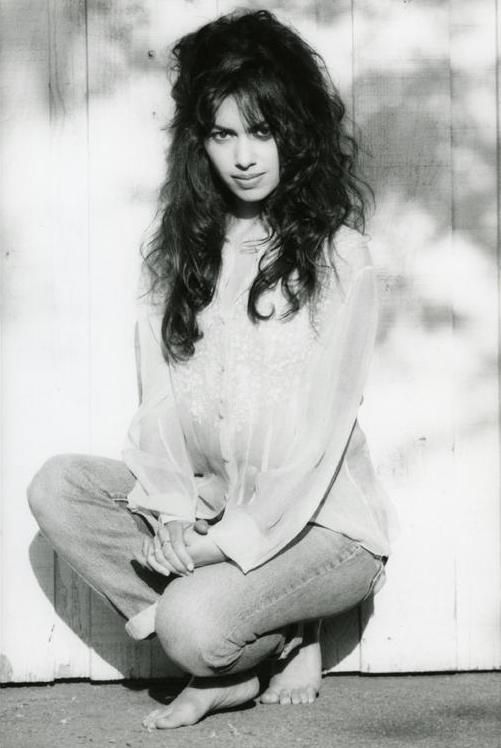If you were alive during the ‘80s, chances are you didn’t just hear Susanna Hoffs—you felt her. She wasn’t loud. She didn’t need pyrotechnics or a screaming vocal range to grab your attention. She just looked into the camera with those expressive almond-shaped eyes, sang in that soft, sultry voice, and boom—she was unforgettable.
There was an effortless magnetism about her. The tousled dark hair. The way she slightly tilted her head as she sang. The subtle mystery that lingered in her gaze. She wasn’t trying to be an icon. She just was. But what’s most fascinating about Susanna Hoffs isn’t her ‘80s stardom—it’s the creative reinvention that followed.

Rising to Fame with The Bangles
The Bangles weren’t your average pop-rock band. They weren’t manufactured. They weren’t overly polished. Their sound was like sunshine on vinyl—bright, nostalgic, but with an edge. And at the center of it all was Susanna, the lead vocalist and rhythm guitarist with a voice that could make you feel seen even through the radio.
Hits like Manic Monday, Walk Like an Egyptian, and Eternal Flame didn’t just climb the charts—they became soundtracks to a generation. Susanna had a way of singing that felt like a conversation. She didn’t belt—she invited you in, made you lean closer. Every lyric felt like a secret she was sharing only with you.
Video: The Bangles – Manic Monday (Official Video)
The Look That Launched a Thousand Crushes
Let’s not pretend otherwise—Susanna Hoffs was a total heartthrob. She had a classic beauty that didn’t need embellishment. It wasn’t just how she looked—it was how she carried herself. Her confidence wasn’t loud or brash. It was subtle. Self-assured. Magnetic.
The way she’d gaze just past the camera lens became her signature move. Not calculated, just natural. That gentle stare sparked countless teenage crushes and helped shape an era’s definition of cool femininity. But beneath that allure was a sharp, talented artist who was only just beginning to define herself.
Carving a Path Beyond Pop Fame

When The Bangles paused in the early ‘90s, many expected Susanna to fade into nostalgia. Instead, she stepped forward with solo projects that revealed a more personal side of her artistry. Albums like her self-titled solo debut showed a stripped-down, introspective version of the pop queen fans thought they knew.

Then came the Under the Covers albums with Matthew Sweet—brilliant reinterpretations of songs from the ‘60s, ‘70s, and ‘80s. These weren’t throwaway covers. They were tributes. Crafted with love, detail, and a deep respect for the original material. It was clear—Susanna wasn’t chasing trends. She was honoring what made music magical in the first place.
From Music Notes to Storylines: The Literary Leap

Here’s where things get even more interesting. Just when fans thought they knew every side of Susanna Hoffs, she opened a brand-new chapter—this time, as a novelist.
Her debut novel didn’t ride on her music fame. It stood on its own. Written with warmth, depth, and a touch of the romantic soulfulness we’ve always heard in her voice, the book proved one thing: storytelling runs in her blood.
She didn’t just dip her toe into the literary world—she dove in. And like everything she’s done, it came from an authentic place. The prose was melodic. The characters had layers. The themes echoed the same emotional intelligence that once made Eternal Flame hit you right in the chest.
Redefining Reinvention—Quietly, Powerfully

There’s something truly refreshing about how Susanna reinvents herself. She doesn’t broadcast every move. She doesn’t need to trend or go viral. Instead, she just keeps creating—intentionally, thoughtfully, and always true to herself.
In a world obsessed with noise and visibility, her quiet power stands out even more. It reminds us that reinvention doesn’t always have to scream. Sometimes, it arrives softly—like a favorite melody reimagined into a beautiful novel.
A Timeless Influence for New Generations
Video: Susanna Hoffs – Eternal flame (Live NRK Wiese 1996)
Decades after Walk Like an Egyptian, Susanna Hoffs still inspires. Younger generations are discovering her through social media clips, curated playlists, and now even book clubs. Meanwhile, longtime fans are cheering her on, proud to see her continue creating on her own terms.
She never had to become a caricature of her former self. She never clung to youth. Instead, she embraced growth—each wrinkle, each chapter, each new creative medium.
She paved the way for female artists to evolve, to age with grace, and to pursue new passions without apology. In a music industry that often chews people up and spits them out, Susanna proved you can still have something to say long after the spotlight fades.
Conclusion

Susanna Hoffs began as a pop icon with a voice like velvet and eyes that could stop time. But she didn’t stop there. She wrote new songs, reimagined old ones, and eventually turned to the written word to continue telling stories.
Her journey from chart-topper to novelist is a masterclass in reinvention without losing authenticity. She’s not a relic of the past—she’s proof that true artists never stop creating. They grow. They adapt. And they keep finding ways to connect.
So whether you remember her from your first mixtape or you’re just discovering her through a bestselling novel, one thing’s clear—Susanna Hoffs still has plenty to say. And we’re still listening.



